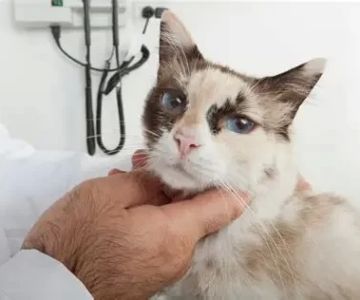How to Manage Concurrent Illnesses in Aging Pets
- 1. Understanding Concurrent Illnesses in Pets
- 2. Common Health Issues in Aging Pets
- 3. Challenges of Managing Multiple Illnesses
- 4. Strategies for Effective Treatment
- 5. When to Seek Professional Help
- 6. Conclusion
1. Understanding Concurrent Illnesses in Pets
As pets age, they, like humans, can develop multiple health conditions simultaneously. These concurrent illnesses—when two or more conditions affect your pet at the same time—can complicate diagnosis, treatment, and overall care. Managing these illnesses effectively is essential for maintaining your pet’s quality of life and ensuring they remain as comfortable as possible.
In this article, we’ll explore how to manage concurrent illnesses in aging pets, discussing common health issues, the challenges of managing multiple conditions, and effective treatment strategies. Whether you are dealing with a pet’s chronic illness or simply want to be prepared, understanding these factors will help you navigate the complexities of caring for an aging pet.
2. Common Health Issues in Aging Pets
Just like humans, aging pets are prone to various health issues that can affect their quality of life. Some of the most common health conditions in elderly pets include:
- Arthritis: This joint condition causes pain and stiffness, often leading to difficulty in movement. It’s common in older dogs and cats, especially larger breeds.
- Kidney Disease: Chronic kidney disease is prevalent in aging pets and can lead to symptoms like increased thirst, urination, and weight loss.
- Dental Disease: Dental issues, such as periodontal disease, are widespread among older pets, affecting their ability to eat and causing significant discomfort.
- Heart Disease: Heart conditions, including heart murmurs or congestive heart failure, are common in aging pets, leading to difficulty breathing and fatigue.
- Diabetes: Diabetes can also develop in aging pets, often leading to excessive thirst, weight changes, and more frequent urination.
When multiple of these conditions appear together, they can greatly complicate the treatment process, making it necessary to address each one in a coordinated manner to avoid conflicts between treatments or medications.
3. Challenges of Managing Multiple Illnesses
Managing concurrent illnesses in aging pets presents several challenges. First, different conditions may require different types of treatment, and some treatments may not be compatible with others. For example, a pet with both kidney disease and arthritis may need to be cautious with medications, as certain painkillers can worsen kidney function.
Additionally, pets with multiple health conditions may experience difficulty in coping with the changes in their body. The symptoms of one condition might mask or exacerbate the symptoms of another, leading to a situation where it’s harder for pet owners to identify what’s causing discomfort or distress in their pets.
It’s also crucial to monitor how the pet responds to medications. Aging pets often have more sensitive systems, meaning they could have stronger reactions to treatment than younger pets. Furthermore, chronic illnesses can affect your pet’s energy levels and behavior, making it more difficult for owners to assess their pet’s condition accurately.
4. Strategies for Effective Treatment
Effective treatment of concurrent illnesses in aging pets requires a multi-faceted approach. Below are some strategies that can help manage these health conditions:
- Work with Your Veterinarian: Partnering with a trusted veterinarian is critical when managing multiple illnesses. Your vet can help create a comprehensive care plan, coordinate treatments, and monitor your pet’s progress over time. At Hidden Brook Veterinary, for example, we offer specialized care tailored to the needs of aging pets and multiple conditions.
- Medication Management: Carefully manage medications to ensure they don’t interfere with each other. Your vet may recommend adjusting doses, switching to more compatible medications, or using natural supplements to help manage symptoms.
- Regular Check-Ups: Regular veterinary visits are vital to monitor the progression of your pet’s illnesses and adjust treatments as needed. These check-ups can catch new symptoms early and prevent them from worsening.
- Dietary Changes: Proper nutrition is essential when managing multiple health conditions. Your pet’s diet may need to be adjusted to support their organs and provide the necessary nutrients without worsening their conditions. Consult with your veterinarian to find the right balance.
- Physical Therapy and Exercise: For pets with mobility issues like arthritis, gentle physical therapy or low-impact exercise can help keep them moving and reduce pain. Tailored exercise routines can improve your pet’s overall health and prevent stiffness.
By combining these strategies, you can effectively manage your aging pet’s concurrent illnesses and improve their quality of life.
5. When to Seek Professional Help
It’s important to seek professional help when managing concurrent illnesses in pets, especially if symptoms worsen or new ones appear. Some signs that you should consult your veterinarian include:
- Significant changes in your pet’s behavior, such as increased lethargy or aggression.
- Difficulty eating or drinking, or noticeable weight loss or gain.
- Visible signs of pain, such as limping, whining, or reluctance to move.
- Uncontrolled symptoms, such as vomiting, diarrhea, or excessive thirst.
Don’t hesitate to reach out to a professional if you feel that your pet’s condition is worsening or you are unsure how to manage their care. A proactive approach can prevent serious complications and improve your pet’s comfort and well-being.
6. Conclusion
Managing concurrent illnesses in aging pets can be challenging, but with the right approach, you can help your pet lead a comfortable and happy life. By working closely with your veterinarian, keeping track of symptoms, and adjusting treatments as needed, you can address the complexities of multiple health issues. Always prioritize your pet’s health and seek professional guidance when necessary. For expert veterinary care, visit Hidden Brook Veterinary for personalized treatment plans and guidance in managing your aging pet’s health.











